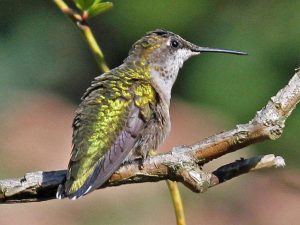 1. Hummingbirds are the littlest moving bird
1. Hummingbirds are the littlest moving bird
With a normal load of 1/8 of an ounce, Hummingbirds are the littlest moving bird. They can go as quick as 30 mph (48 kph) while moving. Their transient way takes them across the Inlet of Mexico two times every year. They fly this constant, which can be similar to 600 miles. That is a long excursion for a little bird!
2. Migrating birds can travel Exceptionally far
Birds in movement can go similar to 16,000 miles. To arrive at their objective on schedule, some movement at paces of 30mph. At this speed, birds require as long as 533 hours to arrive at their last objective. Voyaging 8 hours every day, it would take a few birds 66 days to arrive at their movement objective. This implies the birds have been voyaging quite a while when they get to your patio! Ensure they are invited with new food and water when they show up.
3. A few birds move at high elevations
Not all birds travel low where we can see them. Warblers travel at an elevation as high as 500 to 2,000 feet. Geese and vultures have been known to go at elevations of 29,000-37,000 feet high. A few researchers accept that birds make a trip at higher heights to preserve energy with less fluttering of the wings and seriously floating. They go all over elevations to acquire increases in regular lift from the progressions in thickness.
4. Migrating birds realize where to go
Intuitively, moving birds realize where to move and how to explore back home. They utilize the stars, the sun, and earth’s attraction to assist them with discovering their direction. They likewise quite often get back to where they were conceived. Along these lines, you could be correct on the off chance that you think you see a similar bird every year in your yard.
5. Birds plan for relocation
To assist birds with setting themselves up for the long excursion away from home for the colder time of year, they develop muscle versus fat. They fuel up with specific food sources and hold up to half of their body weight. Feed birds the entire year, however particularly when they get back from relocation and when they are planning to leave for movement. They will be eager!
6. Birds move at various occasions
Have you at any point thought about what time birds move? When the greater part of us are making our morning and evening drives to and from work, relocating birds are taking care of and resting. Many birds move during the evening. They do this for an assortment of reasons. Around evening time, the air is cooler which kills the need to stop as a lot to chill off in water. Essentially, around evening time there are less hunters and perceivability of these hunters is low. Birds are more protected voyaging when their hunters are resting. This isn’t the situation for all birds, as you normally see geese and cranes relocate during the day.
7. Wisconsin is a well known transient objective state
In May, a well known relocation month, it is assessed that 3 million birds cross the Wisconsin state line day by day as they move back to their Wisconsin homes. What’s more, this is on a light evening! On weighty movement days, there can be upwards of 30 million birds relocating into Wisconsin throughout the spring season.
8. Migrating birds face numerous dangers during their excursion
As referenced before, birds move during specific times to keep away from possible dangers. Their greatest dangers on the long excursion home in the spring incorporate hunters like owls or falcons, drying out, starvation, oil penetrating apparatuses in the sea, windmills, power stations, and exceptional environment changes. These dangers are instinctually thought about, yet birds are as yet not totally protected during their excursion.
9. Neotropic birds are a sort of transitory bird
Neotropic birds will be birds moving from neotropic regions in Focal America and South America. Birds that are considered neotropic migrators incorporate the Northern Oriole, the Baltimore Oriole, the Indigo Hitting, the Rose-Breasted Grosbeak, and the Ruby-Throated Hummingbird.
10. Birds need explicit things when arriving in yards after movement
In particular, birds need food, water, and settling materials. They will be extremely ravenous subsequent to applying energy to travel those significant distances. They could be confronting lack of hydration in the event that they don’t drink sufficient water in the wake of completing their relocation flight. Also, they will be prepared to lay their eggs. By giving settling materials in your yard like string, roughage, pet hair, portions of texture, and normal wellsprings of twigs or greenery, birds will actually want to construct their home on schedule to have their infants.
